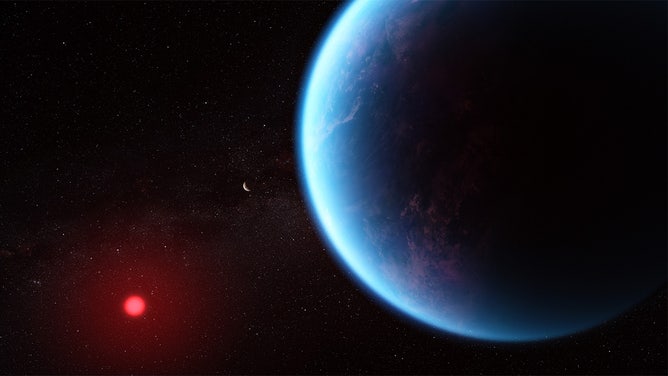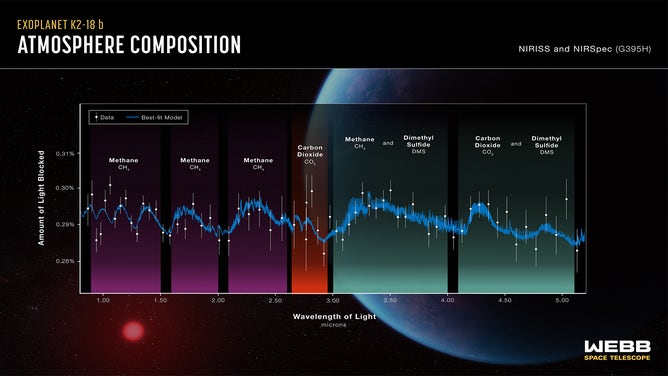Webb detects possible signs of life on distant planet
Located about 120 light-years from Earth in the constellation Leo, K2-18 b lies within the habitable zone of a nearby star.
FILE: See stunning images taken by the James Webb Space Telescope
The James Webb Space Telescope has released mesmerizing images of the deepest corners of our universe.
NASA recently announced the discovery of a molecule on the exoplanet K2-18 b that, on Earth, is only produced by life.
Located about 120 light-years from Earth in the constellation Leo, K2-18 b lies within the habitable zone to a nearby star.
By using NASA’s James Webb Space Telescope, scientists studied the atmosphere of K2-18 b and noted the possible detection of a molecule called dimethyl sulfide (DMS). NASA said that, on Earth, DMS is only produced by life with the majority of the DMS in Earth’s atmosphere emitted by phytoplankton in marine environments.

This illustration shows what exoplanet K2-18 b could look like based on science data. K2-18 b, an exoplanet 8.6 times as massive as Earth, orbits the cool dwarf star K2-18 in the habitable zone and lies 120 light years from Earth.
(NASA, ESA, CSA, Joseph Olmsted (STScI) / NASA)
"Upcoming Webb observations should be able to confirm if DMS is indeed present in the atmosphere of K2-18 b at significant levels," said Nikku Madhusudhan, an astronomer at the University of Cambridge and lead author of the paper announcing these results.
NASA SCIENTIST DISCOVER EARTH-SIZED ‘HABITABLE ZONE’ WORLD JUST 100 LIGHT-YEARS AWAY
Scientists made this discovery by studying the amount of starlight the passed through the atmosphere of K2-18 b, as the exoplanet’s orbit brought it between its star and Webb. This positioning allowed Webb to detect a drop in brightness, particularly at different levels based on the molecules in the atmosphere, and then use that information to piece together the exoplanet’s gaseous composition.

Spectra of K2-18 b, obtained with Webb’s NIRISS (Near-Infrared Imager and Slitless Spectrograph) and NIRSpec (Near-Infrared Spectrograph) displays an abundance of methane and carbon dioxide in the exoplanet’s atmosphere, as well as a possible detection of a molecule called dimethyl sulfide (DMS).
(NASA, ESA, CSA, Ralf Crawford (STScI), Joseph Olmsted (STScI) / NASA)
In addition to DMS, scientists also found carbon-bearing molecules, including an abundance of methane and carbon dioxide, along with a shortage of ammonia in the atmosphere. These findings support the hypothesis that there may be a water ocean underneath a hydrogen-rich atmosphere in K2-18 b, according to NASA. They noted, however, that this ocean may be too hot to be habitable or to be liquid.
With a radius 2.6 times that of the radius of Earth and is 8.6 times as massive as Earth, the K2-18 b’s large size means that the exoplanet’s interior has a large mantle of high-pressure ice, NASA said.
